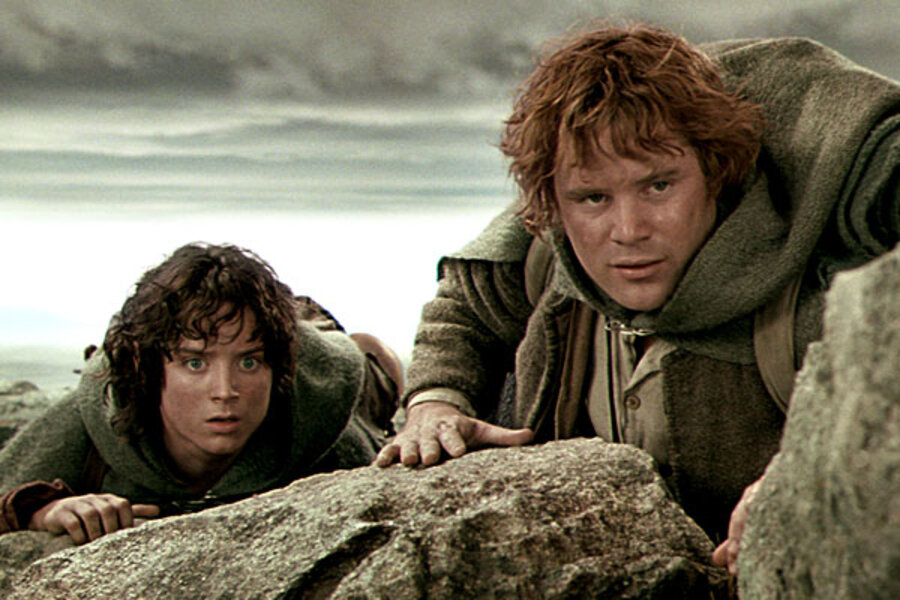Could global warming turn us all into hobbits?
Loading...
It's been long known that the Earth's rising surface temperatures portend mass extinction, prolonged droughts, extreme weather, and rising seas. Now we can add a new worry: Humanity could be transformed into a race of hobbits.
New research reveals the extent to which global temperatures can influence the evolution of the size of mammals. Hot weather tends to make them smaller, and cold weather tends to make them grow.
About 56 million years ago, our planet underwent a major temperature swing. Nobody knows what initially caused it – conjectures include volcanic activity, a comet impact, a sudden release of methane from the ocean, and natural variations in the Earth's orbit – but we know that, over a period of about 175,000 years, temperatures increased 9 to 18 degrees Fahrenheit, and then suddenly dropped.
During this time, an equine creature roamed the forests in what is now Wyoming's Bighorn Basin. Sifrhippus sandrae, the earliest known horse, doesn't look much like today's horses. For one thing, it weighed only 12 pounds or so and was roughly the size of a small dog.
And it was destined to get even smaller. A study of Sifrhippus molars unearthed in Wyoming and kept at the Florida Museum of Natural History at the University of Florida in Gainesville found that the animals shrunk to about eight pounds over the first 130,000 years of warming, and then shot back up to 15 pounds during the next 45,000 years as the planet cooled again.
The researchers ruled out atmospheric pressure and aridity, and the animal's diet, and concluded that temperature was causing the species' rapid shrinkage and growth. "This, for the first time, tells us that temperature is what's driving the body size evolution for these horses," said the University of Florida's Jonathan Bloch, who co-authored the study, in an interview with LiveScience.
These findings, which were published Thursday in the journal Science, are consistent with Bergmann's rule, an ecological principle, first proposed by German naturalist Christian Bergmann in 1847, that animals of a given species tend to be smaller in hotter climates. Bergmann's rule holds for about three-quarters of all mammals.
But does that include us? Anthropologists have found that Arctic populations such as the Inuit, Aleut, and Sami peoples, tend, on average, to be heavier than people living closer to the equator. But there are many exceptions to this tendency.
So what is the likelihood that our species will transform into pint-sized, hairy-footed halflings who, say, favor a quiet bucolic lifestyle yet are nonetheless capable of acts great courage? Probably not that great: As anyone who has walked into a door frame built by our forbears can attest, humans have been getting taller lately. But even if we did wind up with having the stature of Frodo and Samwise, it wouldn't be so bad. Adapting to a changing environment is certainly better than the alternative.






